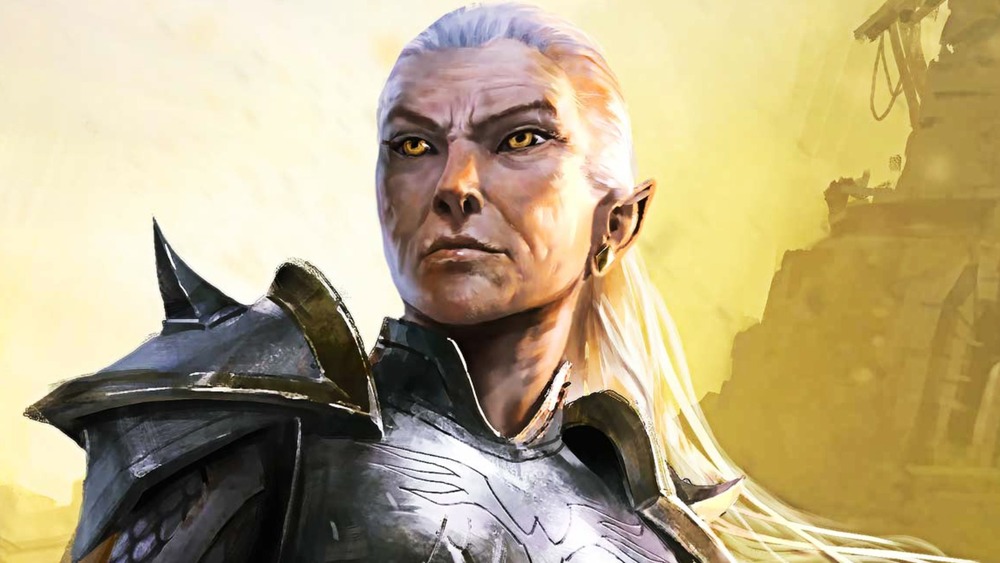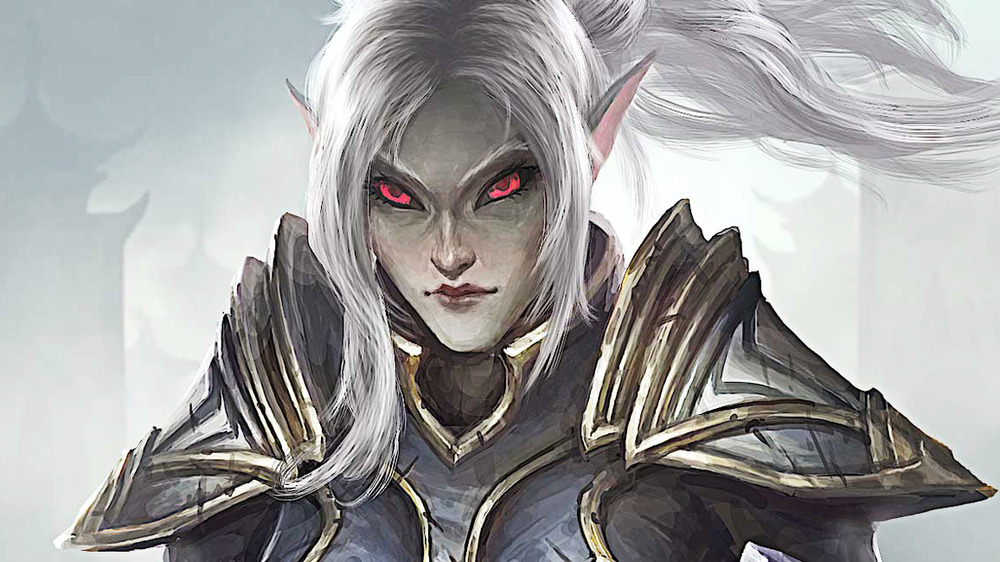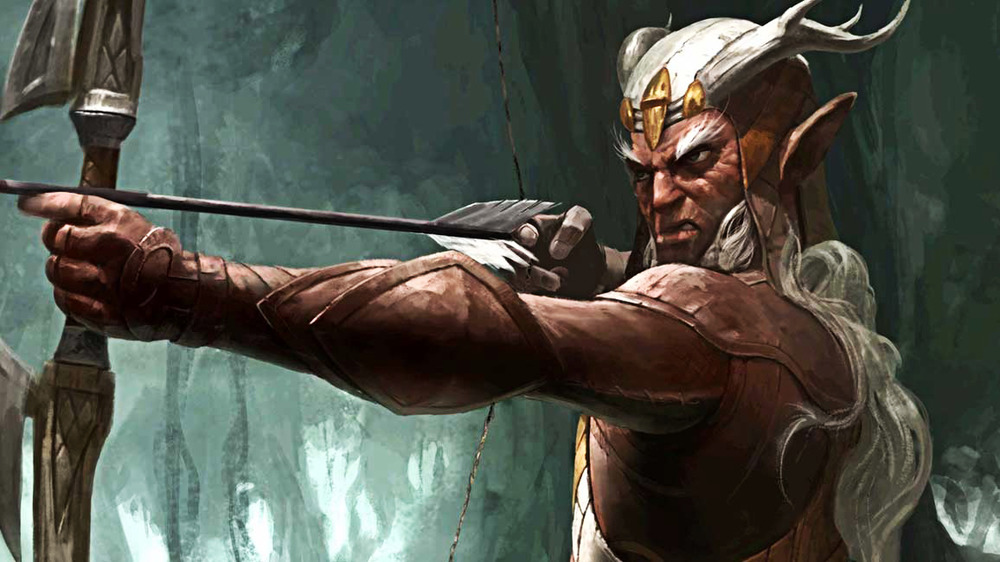The Untold Truth Of The Elder Scrolls' Elves
One of the elements that have drawn fans into The Elder Scrolls franchise over the last couple of decades is the universe's detailed lore. One of the things that sell the world is Bethesda's dedication to documenting not just the kingdoms and ruins players explore in every game but the complex, intertwining sagas of the different playable and non-playable races featured throughout the series.
From the catlike Kajit to the long-missing dwarven Dwemer, every culture encountered on the world of Nirn has an elaborate backstory traceable through in-game conversations and written histories. While specifics about some of the more mysterious races, such as the Dwemer, may still only be known to Bethesda's writers, with enough digging, you can learn plenty about any species featured in the series — even things that only adults would notice about Elder Scrolls.
While there is a lot to discover in-game about every race in The Elder Scrolls universe, one group stands out as difficult to pin down. The elves, whose otherworldly appearance differentiates them from their pop culture brethren, comprise multiple playable and nonplayable species. This is the untold truth of The Elder Scrolls' elves.
The Elder Scrolls' elves have a divine history
The different races of elves that players encounter in Skyrim, Oblivion, and every other Elder Scrolls game share at least one thing in common — a heavenly ancestry. There are constant references to two divine ancestors, the Aedra and the Daedra, throughout every Elder Scrolls adventure. Those two terms come from Elvish, "Aedra" translating into "our ancestors" and "Deadra" translating into "not our ancestors." As such, the majority of Elves believe they are descended directly from the Aedra.
Elven historians assert that life on Nirn began when their singular ancestor, Lorkhan, gave up his immortality to create the entire universe of The Elder Scrolls series. While the elves are only descendants of immortal beings, that lineage may explain their centuries-long life cycles.
The Elder Scrolls' elves' place at the beginning of history makes it possible for them to trace their lineage to the beginning of recorded time on Nirn. This long history gave the elves a chance to impact every other society in the world, either culturally or genetically.
Elves in The Elder Scrolls intertwine with almost every other race
The original race of Elves was known as the Aldmer, or first folk, and settled on the Summerset Isles of Tamriel. As the elves began to migrate across the continent, subraces such as the Maormer (sea folk), Altmer (high folk), Bosmer (forest folk), Alyyeid (high heartland folk), Dunmer (dark folk), and Falmer (snow folk) all emerged. Many of these races are playable in various Elder Scrolls games, and even those that aren't are often encountered as NPCs.
However, the elven lineage also traces itself through many non-elven species. The long-gone Dwemer, assumed by many to be dwarves, are an offshoot of the Aldmer. The human race Bretons, originally called Manmer, are a half-elven species.
Even some of the least elfin creatures in The Elder Scrolls world can connect their heritage to that of the Aldmer. Orcs trace their lineage to a group of elves led by a champion named Trinimac. However, the Daedra Boethiah ate Tinimac, physically transforming him into the Daedric Prince Malacath. Malacath's followers likewise underwent a dramatic transformation, becoming the aggressive although often misjudged Orcs featured in every significant Elder Scrolls game.



